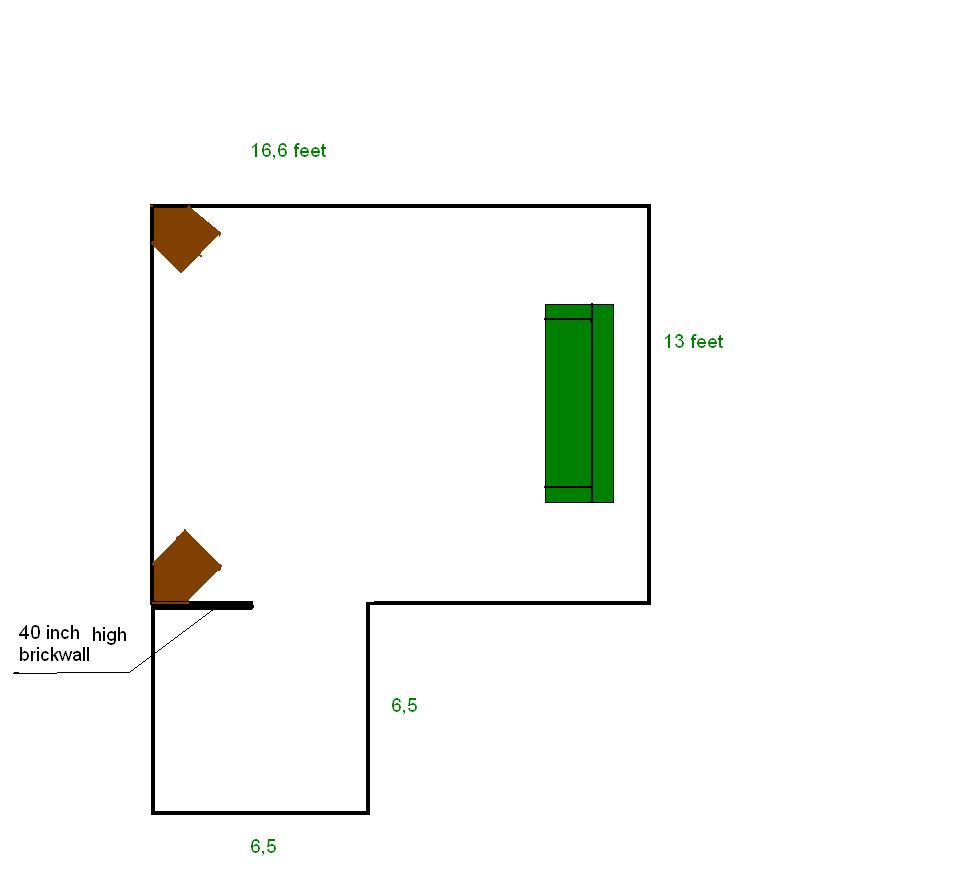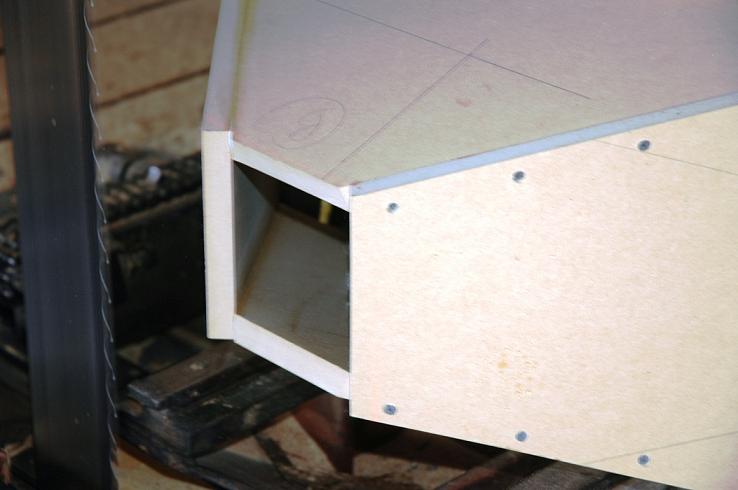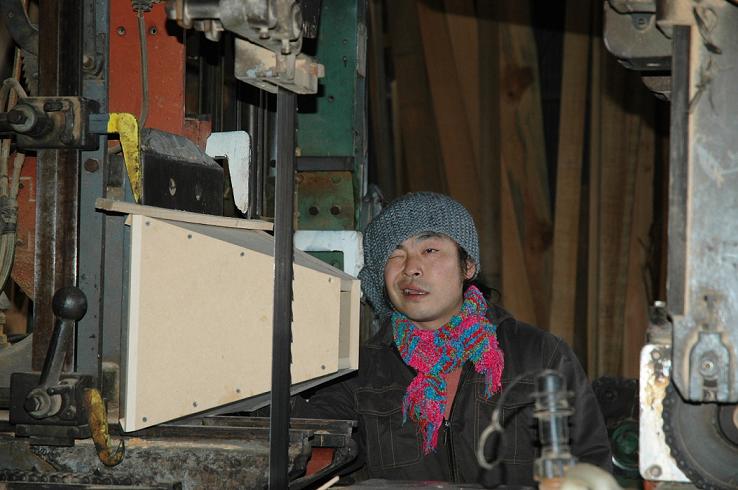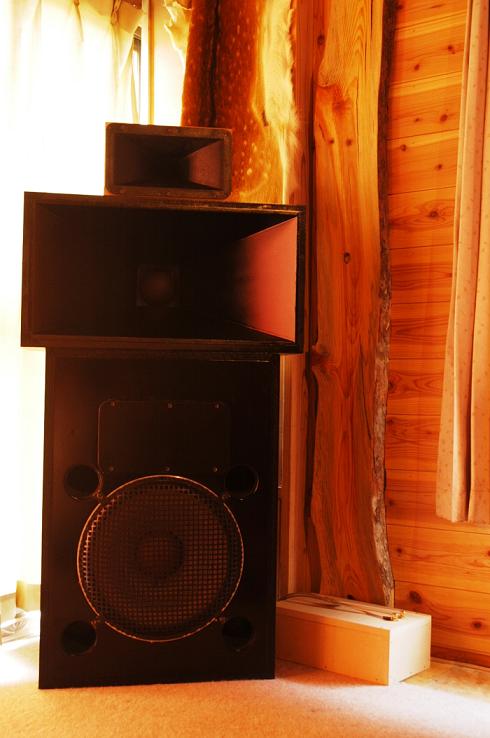|
Home » Sponsored » Pi Speakers » 4 Pi and 7 Pi bass response- More similar or different? (4 Pi VS 7 Pi )
| Re: 4 Pi and 7 Pi bass response- More similar or different? [message #61630 is a reply to message #61627] |
Mon, 28 December 2009 21:41   |
 |
 Wayne Parham
Wayne Parham
Messages: 18985
Registered: January 2001
|
Illuminati (33rd Degree) |
|
|
| feket663 wrote on Mon, 28 December 2009 14:56 |
Here is my room's schematic. Is this good place for the 7PI?
I do not want to put boxes on the opposite side of the room, because there is not enough the bass. I think the little part of room reduce the bass.

|
Yes, you could do that. If the false wall is large enough it will work pretty well. My concern is it might be awkward, but maybe not. If it does prove awkward, you can always stick with four π speakers.
You might try adding the midhorn on top of four π cabinets, and try different placement options. That way, you can go back to the four π cabinets if it doesn't work out. On the other hand, if it does work out, you can build the proper bass bins. This will let you try out the basic sound without going through all the trouble of building the bass bins at first. If you like it, build the bass bins which will move the midhorn and tweeter up higher.
One more thing I'd like to mention. Give the multisub approach a try. This will completely change the character of the bass in your room. You will find that you may be able to put the speakers in the corners closest to the green couch in your drawing, and then pull it over to the other side. Using a couple of subs, you'll increase extension as well as smoothing the room modes. I'd probably do that first, because you can use the subs with fours or sevens. It will improve them both.
|
|
|
|
|
|
|
|
| Re: 4 Pi and 7 Pi bass response- More similar or different? [message #61709 is a reply to message #61567] |
Tue, 12 January 2010 22:39   |
 Psychoacoustic
Psychoacoustic
Messages: 75
Registered: May 2009
|
Viscount |
|
|
Finished the 7 Pi midhorn over the winter break. Gained some new woodworking skills, that's for sure! For example, take cursed thing to old mate down at the woodyard... put it through the tree-ripping bandsaw. Problem solved.


Had the crossovers built by Wayne on hand, mounted them in boxes. Removed the HF gear from this project http://audioroundtable.com/forum/index.php?t=msg&th=11661&start=0&
(4 Pi derivative), made a cover plate for the hole.
Mounted the HF unit in box and... SHA-ZAAM!


Have a couple of queries, if I may.
My three-year-old son has already made gestures towards reaching up and poking the dust caps. It's embarrasing to hear a grown man scream like a girl. Would acoustically-transparent cloth glued to the inside of the horn throat square be a problem?
What is the theory behind the 'backward' facing woofer? Is this to utilise the corner principle, negate floor bounce? In theory or practise, would a forward facing woofer as I currently have sound any different?
As pictured, the walls (to the left, curtains covering ancillaries, to the right window curtains) would diffract sonic reflections from the midhorn (and tweeter)- yes? Currently in the process of constructing doors to cover both of these curtained areas (due to a desire to secure the hi-fi gear and dust is a big problem on these components from the curtains). Which surface would be optimal- a diffractive, reflective, absorbative (i.e. rigid fibreglass acoustic panel) or combination from the above?
-
 Attachment: before.JPG
Attachment: before.JPG
(Size: 58.80KB, Downloaded 6515 times)
-
 Attachment: woodshop.JPG
Attachment: woodshop.JPG
(Size: 81.65KB, Downloaded 6686 times)
-
 Attachment: close up.JPG
Attachment: close up.JPG
(Size: 70.17KB, Downloaded 13746 times)
-
 Attachment: room 7 Pi.JPG
Attachment: room 7 Pi.JPG
(Size: 98.71KB, Downloaded 6581 times)
|
|
|
|
| Cornerhorn Ruminations [message #61711 is a reply to message #61709] |
Wed, 13 January 2010 08:56   |
 |
 Wayne Parham
Wayne Parham
Messages: 18985
Registered: January 2001
|
Illuminati (33rd Degree) |
|
|
Nice looking midhorns! Congratulations!
We will have the midhorn flat pack kits back on the shopping cart in about a month or six weeks (finally!) I met with the cabinetmaker on Sunday and we discussed it at length.
You can keep stuff out of the midhorn using a grill gloth or mesh stretched across the throat. It should be as acoustically transparent as possible, of course.
The idea behind the rear facing woofer is it puts it as close to the corner apex as possible. This is also the case for the midhorn because at low frequencies, it is close enough to the side walls they act as extensions of the flare. As frequency rises, the midhorn becomes more directional and the corner isn't really important. Same with the tweeter, it is acoustically distant because of the smaller wavelengths involved, but it has directivity control through its passband and doesn't need any "assistance" from the corner like the woofer and midhorn do.
The goal, in a nutshell, is to keep the sound source acoustically close at frequencies where it is not very directional. This makes the walls, themselves, become the directivity control device. They form a large waveguide. Being acoustically close, they aren't creating reflections, they're a launch point, part of the source. At higher frequencies, the horns used will provide the directivity control and this reduces reflections. It still doesn't hurt to line the walls with absorbent material, as this will reduce reflections even further.
The corner expansion really works for us in the lower midrange region, from about 100Hz to a few hundred Hertz, 300Hz to 500Hz or so. This is the range we're looking for. Below that, room modes take over and the directivity that may have been provided from corner loading (in a larger room or outdoors) is defeated by the self-interference from room modes. That's where multi-subs can help. Above a few hundred Hertz, the sound sources become acoustically distant from the walls, so they would start to cause early reflections if they were not directional by themselves. That's why it is really important that the midrange and tweeter be horns. They provide directivity and reduce early reflections.
As an aside, I've built cornerhorns in many varieties over the years, some with direct radiating mids and some even with direct radiating tweeters. I've even built some that had rear-firing mids and tweeters. This creates a healthy dose of reflected sound, and makes them sound very full. It is an interesting sound, full of ambience. The reverberent field is uniformly charged, so that part is right, but I think the increased early reflections make it sound "busier". It is interesting to listen to at first - a real crowd pleaser at shows - but I think it sounds much better to use horns that provide the directivity control from the midrange up, to reduce early reflections.
Towards this aim, ideally you want to set the cornerhorns on walls that are straight and lacking features that would cause reflections, things like rafters or small shelves, etc. You're using the expansion of the corner from the apex as a large horn, so the same things you'd want in a horn are what you want in the walls. There is one exception, the walls don't need to be rigid, and really shouldn't be. We have competing priorities here - Normally, you want horn walls to be rigid, but in this case, we want the room walls to provide some damping. The perfect walls would be rigid down to the Schroeder frequency (around 100Hz to 150Hz) and then would be flexible below that, absorbing some of the bass energy and damping room modes.
|
|
|
|
| Re: 4 Pi and 7 Pi bass response- More similar or different? [message #61715 is a reply to message #61567] |
Wed, 13 January 2010 18:14   |
 Psychoacoustic
Psychoacoustic
Messages: 75
Registered: May 2009
|
Viscount |
|
|
Wayne, thank you for the informative response re. rear facing woofer theory.
Bass cabinets will be a walk in the park compared to the midhorns!
2 X 3 Pi subs in operation.
I know that Wayne has recently addressed this topic in "False wall bass traps", but thought a brief discussion of wall surfaces specific to 7 Pi cornerhorns might be informative. Apologies if the questions are limited to my situation, hope the discussion may be generalised.
Unfortunately, still no equipment for taking room measurements... anyhoo...
In the rear corners and to the left and right of the speakers in the pictured listening room are low and mid frequency panel bass traps constructed from Ethan Winer's designs http://www.ethanwiner.com/acoustics.html#fiberglass%20traps
These are intended to absorb the hump around 100 Hz - 150 Hz, which I presume is the Schroder frequency often referred to. Would it be advantageous to incorporate the same, sealed bass traps in 50% (or more) of the wall surfaces immediately next to (in front of) the speakers (where curtains are currently located)? I think this application would address the notion of '...we want the room walls to (have the same things you'd want in a horn and) provide some damping'. I presume we do not want high frequency damping in this location if the walls are intended to act as extensions of the horns and provide directivity.
There are high frequecy, rigid fibreglass absorbtion panels in the centre of three walls of the room.
Two more optimisation questions. There is a log roof joist right above the speakers and there are windows behind them. Would these things cause interference? Can't do much about the joist, except relocate speakers to the back of the room (where they were originally intended to go!!) but then I lose my mountain view! Feel a bit claustrophobic, too. Any 7 Pi specific comments on ceiling treatments directly above the speakers?
For the windows behind the speakers, it would be possible to build removable wall 'panels', as high as the glass and 1 metre (plus) wide to partially cover the windows for the purposes of increased bass absorbtion and to better act as '... directivity control device(s)'. Thoughts on the necessity/effectivity of this idea in relation to the rear-facing woofer?
|
|
|
|
| Room Treatments [message #61716 is a reply to message #61715] |
Wed, 13 January 2010 21:25   |
 |
 Wayne Parham
Wayne Parham
Messages: 18985
Registered: January 2001
|
Illuminati (33rd Degree) |
|
|
Those panel traps are probably the best thing you can do to tame room modes. You can't hurt yourself putting them on every wall. If you're lucky, framed drywall will come close, but even then, the extra damping won't hurt. They really help rooms with rigid walls like brick, concrete or stucco. Walls made of material like that have virtually no damping, so room modes are severe. That's where panel bass traps are most needed.
As for high frequency absorbtion, it's generally a good idea too although directional speakers help a great deal in that regard. The pattern is approximately 90°x40°, so ceiling slap is greatly reduced, as are side wall reflections. You don't want the room to be too lively, as it will sound like a gymnasium. If you clap your hands in the room and hear a sharp ringing sound, then you may want to add some absorbent wedges or at least some extra curtains. On the other hand, rooms that are too dead often don't sound natural either. You'll know it if you go too far, as the room will sound sort of "sterile".
|
|
|
|
|
|
|
|
|
|
Goto Forum:
Current Time: Tue Dec 16 17:17:32 CST 2025
|







